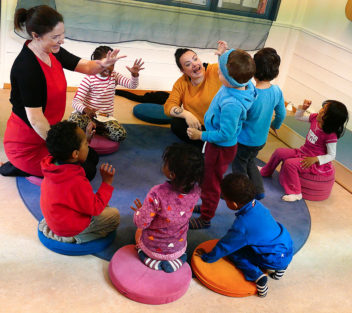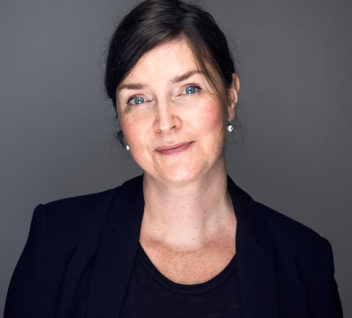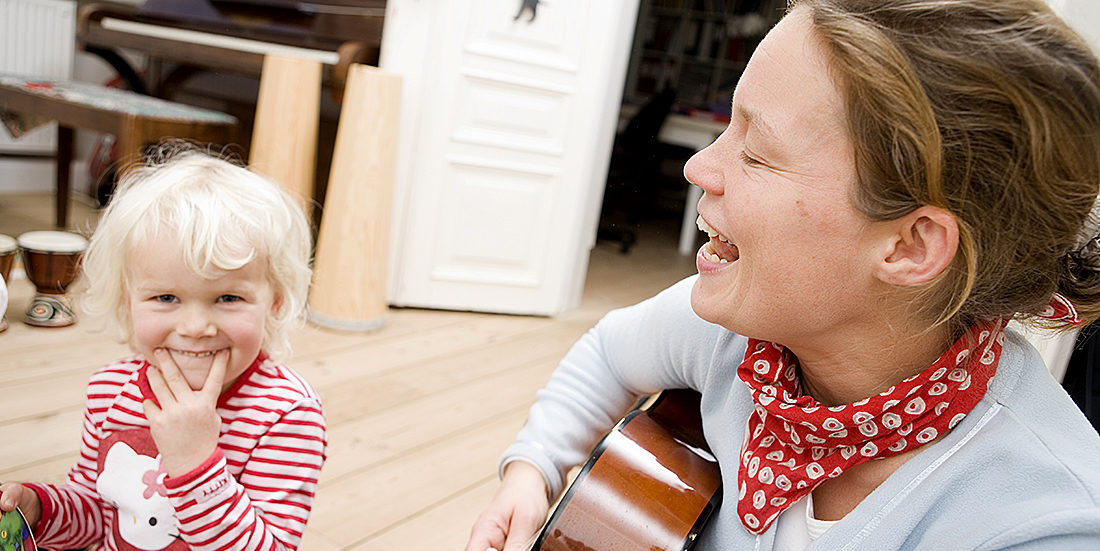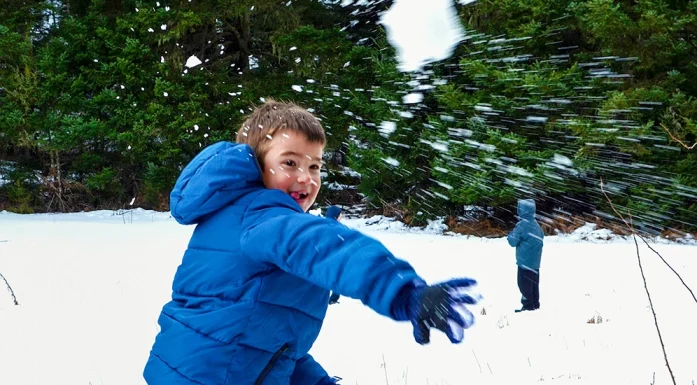If everyone is musical, why am I so afraid to sing?
Lots of people are too embarrassed to sing. These tips can make it easier for kindergarten staff to sing with their young charges.
“Everyone is musical. Everyone can whistle, clap, hum and sing,” says Nora Bilalovic Kulset.
She has been working with young children and parents for many years. Since 1996, when she started the private music institution Musikkmanesjen, she has been offering music groups for parents and children.
Now she has submitted her PhD dissertation to NTNU, in which she offers advice to kindergarten teachers on how to incorporate singing and music into their lessons.
- You might also like: Babies exposed to stimulation get brain boost
Music and second language acquisition
Kulset previously wrote her master’s thesis in musicology, entitled “Musikk og andrespråk” (Music and second language acquisition), on the importance of song in kindergartens with children who have different native languages.

Kulset (on left) used herself as a research object in her dissertation. During the research period, she held music sessions in kindergartens with three- and four-year-olds, where about half had another language than Norwegian as their mother tongue. She filmed all the music sessions and then analysed the material. Photo: Nora B. Kulset
“Singing a lot in kindergarten really helps integrate the class. The children are practising their new language in a completely non-judgemental way when they sing, but they’re also forming friendships,” Kulset says.
- You might also like: What do we do with boys who can’t read
“Voice shame”
During her career, Kulset has repeatedly met kindergarten staff and other adults who claim they can’t sing or do anything about it. As a result, they don’t dare to make music with the children, despite the fact that it is an important social gathering point. Kulset says that music professor Tiri Bergesen Schei refers to people’s embarrassment over their own voice as “voice shame.”
Kulset also puts another term on the table to help explain what her dissertation is about. “Childhood rift” (Norwegian: barndomsbruddet) is a term that was introduced by music professor Jon-Roar Bjørkvold. It describes how you sing and dance freely as a young child, without worrying about others’ judging eyes, but at some point you encounter strong contradictory elements that may prevent you from continuing. Then voice shame sets in.
“We pull back and become musically insecure when we have to sing with others, especially the more the music-making resembles music,” says Kulset.
“Even people who say they can’t sing speak to babies in a singing voice. We use our musicality and voice completely naturally for that. In those conversations, it’s just the melody in our voice, and not the words, that communicate belonging and security,” she says.

Nora Kulset often meets kindergarten staff who claim they can’t sing and that they can’t do anything about it. As a result, they don’t dare to sing with the children, despite the fact that music making is an important social gathering point. Photo: Berre
But when it becomes “music”, then the security disappears.
“My goal has been to study how we can repair or prevent this childhood rift, so that we can stop thinking about whether we sing well enough or not,” she said.
Kindergarten music sessions
Kulset used herself as research object for her dissertation. She wanted to find out what she actually does to make the kindergarten music sessions a place where everyone thrives and wants to be together.
During the research period she held music sessions with three- and four-year-olds in three different kindergartens, where about half had a native language other than Norwegian. She filmed all the sessions, and then analysed the material.
Four tips
Kulset has developed a model that she calls Musickhood to describe how a childhood rift can be repaired or avoided.
The model consists of four concrete pieces of advice for kindergarten staff on how to use song in children’s groups with different mother tongues. Kulset hopes this will make it easier for people to recognize their own musicality and use it.
1) The first tip is to have a fixed ritual for the session. What songs should be sung and in what order? Kulset recommends not taking children’s requests to change the order along the way, and waiting for a time before changing the selection of songs.
2) The second tip is to tolerate chaos. “Recognizing and creating a consistent ritual, like in point one, is about the internal structure. Tolerating chaos is very important. It’s about the outer structure. Both parts are crucial for a successful group session. Hold to the inner structure and recognize that the children have different needs. They can enjoy themselves and be part of the group even if they’re sitting somewhere else than in the circle, or even if they run from the circle to go to the toilet. Don’t let yourself get distracted. Stay with your ritual,” Kulset says.
3) Be aware of your body language and voice. “I was actually somewhat shocked to watch the video footage and see how much I controlled the situation with my body language and my voice. I also noticed how the other adults present could break down or build up the positive group feeling just by their body language and voice. Here the realm of drama can play an enormous role in educating new kindergarten and school teachers,” she says.
4) Be aware of the room environment. “This is something everyone already knows, but again, studies show we have to be conscious of it. If the space is messy and toys are scattered about, children who don’t understand anything you’re saying can become easily distracted,” she points out.
Kulset hopes that her research can be used in educating new teachers, as well as be a source of inspiration and guidance for people already working in the field. She believes that the research she has done intersects the fields of music psychology, music education, sociomusicology and music therapy.
You can read more about Kulset’s research here: “It’s you —not the music”: musical skills in group interventions in multicultural kindergartens. Nordisk musikkpedagogisk forskning : Årbok. vol. 17.





